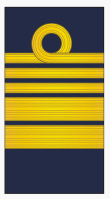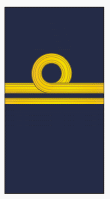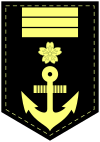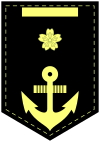Japanese Officer Naval Ranks WWII
Commissioned officer ranks
All-forces ranks
IJN Insignia
Admiral
Kaigun Taish

Vice Admiral
Kaigun Chujo

*
Rear Admiral
Kaigun Shosho

Captain ;
Kaigun Daisa

Commander
Kaigun Chusa

Lieutenant Commander
Kaigun Shosa

Lieutenant
Kaigun Daii

Sub Lieutenant Lieutenant Junior Grade
Kaigun Chui

Enlisted Ranks (there was a reorganization after 1942
all ranks below are given in two figures:
Before 1942
After 1942
Non-commissioned officers *(
Kashikan) - selected from conscripts and given one year of training in the Navy NCO Academy.
Petty Officer First Class
Ittoheiso
Chief Petty Officer
Jotoheiso

Petty Officer Second Class
Nitoheiso
Petty Officer First Class Ittoheiso
 Petty Officer Third Class Santoheiso
Petty Officer Third Class Santoheiso
Petty Officer Second Class
Nitoheiso

Enlisted/seamen
Sailor First Class
Ittosuihei
Leading Seaman
Suiheich***333;

Sailor Second Class
Nitosuihei
Able Seaman
Jotosuihei

Sailor Third Class
Santosuihei
Seaman
Ittosuihei

Sailor Fourth Class
Yontosuihei
Seaman Recruit
Nitosuihei

there were also Cadet and Warrant Officer Ranks:
Midshipman: Kaigun Shoi Kohosei
Warrant Officer
Kaigun Jun-i
Remarkable progress with the ships, very good to see. Yes they used Quad Tube mounts for Torpedoes on Surface ships standard, their doctrine was to have overwhelming numbers of fish available on demand, rather than the more limited torpedo attack scale of the RN and USN, the USN really did not like TT in surfave ship engagments and it was a stunning surprise to them when the IJN TT doctrine tore the pants off of some USN units and engagments.
Re getting the DD to attack a fleet, why not station a sub UNDER the fleet and have it travel that way as a "lure" for attacks, it would have the mission to shadow the fleet and would not need to engage?
I finished a project successfully for my work this week, and now have time to catch up. Marvelous progress Peabody and please e mail me or PM with any questions or discussoin to support your remarkable work here.
It is true as you said, OJN doctrine was to engage surface elements, they considered attacking supply lines below the dignity of the service and not the Samurai way, not until late in the war was there a sizable support for such but by then it was too late. IJN subs were allowed to attack convoys if they came across them AFTER they had accomplished primary mission, however the slow surface and dive time of many of the classes of IJN subs made it a risky business (this was due to the need to change drive train, from one format to another, poor design but they tried all along in development of the IJN fleet to engineer and design as much as possible using native..ie Home Island resources, and know how.)
Bravo i say to all of the great work from everyone helping with the testing and ideas.
Sadly the forum format does not allow for correct phonetic marks for Japanese language, i can give anyone who needs them correct the link for the proper names.